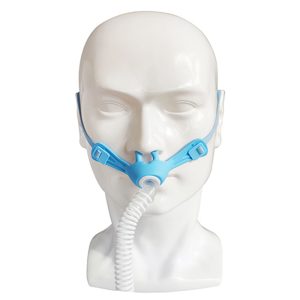Yes, the Airvo is indeed a type of high-flow nasal cannula (HFNC) system. It is designed to deliver humidified and heated respiratory gases, typically air and oxygen, at a high flow rate to patients with respiratory conditions. The Airvo system has become an essential tool in respiratory care, especially in managing patients with conditions like chronic obstructive pulmonary disease (COPD), pneumonia, and in some cases, during the recovery phase of acute respiratory distress syndrome (ARDS). Here’s a detailed explanation of the Airvo system and its role as a high-flow nasal cannula:
Overview of High-Flow Nasal Cannula (HFNC) Systems
High-flow nasal cannula systems are advanced respiratory support devices that deliver a mixture of air and oxygen at high flow rates, typically ranging from 20 to 60 liters per minute (L/min). These systems provide several benefits compared to traditional oxygen therapy methods, such as standard nasal cannulas or simple face masks. The key features of HFNC include:
- High Flow Rate: The ability to deliver high flow rates ensures that patients receive a consistent and adequate supply of oxygen, even during periods of high respiratory demand.
- Humidification and Heating:HFNC systems humidify and heat the gas mixture, making it more comfortable for patients to breathe. This is particularly important for patients who require long-term oxygen therapy, as dry and cold gases can irritate the airways.
- Reduced Work of Breathing: By providing a higher flow of oxygen, HFNC systems help reduce the work of breathing. This is especially beneficial for patients with respiratory distress, as it helps prevent fatigue and supports overall lung function.
- Positive Airway Pressure: HFNC systems can generate a mild positive airway pressure, which helps keep the airways open, reduce airway resistance, and improve oxygenation.
The Airvo System: An HFNC Solution
The Airvo system, developed by Fisher & Paykel Healthcare, is a popular high-flow nasal cannula device that has been widely adopted in various clinical settings. It is particularly noted for its ease of use, versatility, and effectiveness in delivering high-flow therapy.
Key Features of the Airvo System:
- Integrated Humidification and Heating:
The Airvo system includes an integrated humidifier that ensures the gas mixture is adequately humidified and heated to body temperature (37°C). This is critical for patient comfort and to prevent the drying of mucous membranes, which can occur with other oxygen delivery systems.
- Flow Rate Adjustability:
The Airvo allows for precise control of flow rates, ranging from 2 to 60 L/min. This adjustability makes it suitable for a wide range of patients, from those requiring minimal respiratory support to those needing high levels of oxygen delivery.
- Oxygen Blending:
The Airvo system can blend room air with oxygen from an external source, allowing clinicians to adjust the fraction of inspired oxygen (FiO2) from 21% (room air) to 100%, depending on the patient’s needs. This flexibility is vital for managing patients with varying oxygen requirements.
- User-Friendly Interface:
The Airvo system features a user-friendly interface with an intuitive touchscreen that allows healthcare providers to easily adjust settings and monitor therapy. The system also provides real-time feedback on flow rates, FiO2, and temperature, ensuring that therapy is delivered accurately.
- Wide Range of Applications: The Airvo system is versatile and can be used across a broad spectrum of clinical scenarios. It is commonly used in hospital settings, including intensive care units (ICUs), emergency departments, and general wards. Additionally, the Airvo can be used for home care, particularly for patients with chronic respiratory conditions who require ongoing high-flow therapy.
Clinical Benefits of Airvo HFNC Therapy
- Improved Oxygenation:
The high flow rates and FiO2 adjustability offered by the Airvo system help improve oxygenation in patients with hypoxemic respiratory failure. This can be particularly beneficial for patients with conditions like pneumonia, COVID-19, and acute respiratory distress syndrome (ARDS).
- Reduced Intubation Rates:
HFNC therapy with the Airvo system has been shown to reduce the need for intubation in certain patient populations. By providing effective respiratory support, it can help stabilize patients and prevent the progression to more invasive forms of ventilation.
- Enhanced Patient Comfort:
The humidified and heated gas delivered by the Airvo system significantly enhances patient comfort, making it more tolerable for long-term use. This is especially important for patients who may require days or weeks of respiratory support.
- Facilitation of Communication and Nutrition:
Unlike traditional oxygen masks, the Airvo’s nasal cannula design allows patients to speak, eat, and drink more easily, which can improve their overall experience and compliance with therapy.
Conclusion:
The Airvo system is a leading high-flow nasal cannula device that plays a critical role in modern respiratory care. Its ability to deliver high flow rates of humidified and heated oxygen, along with its user-friendly design and clinical effectiveness, makes it an invaluable tool for managing patients with various respiratory conditions. Whether used in a hospital or home care setting, the Airvo system provides a comfortable and effective solution for patients in need of high-flow respiratory support.



